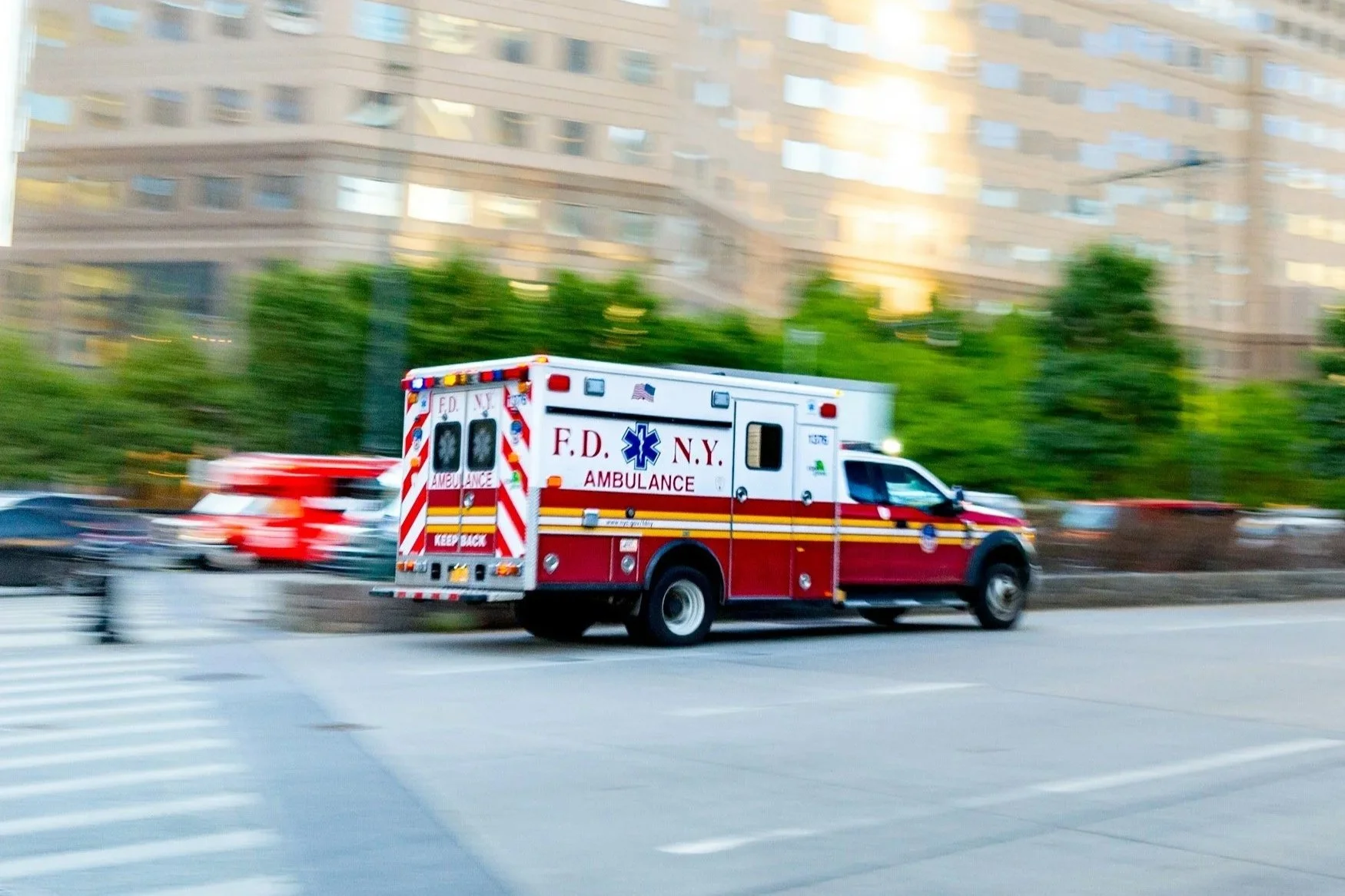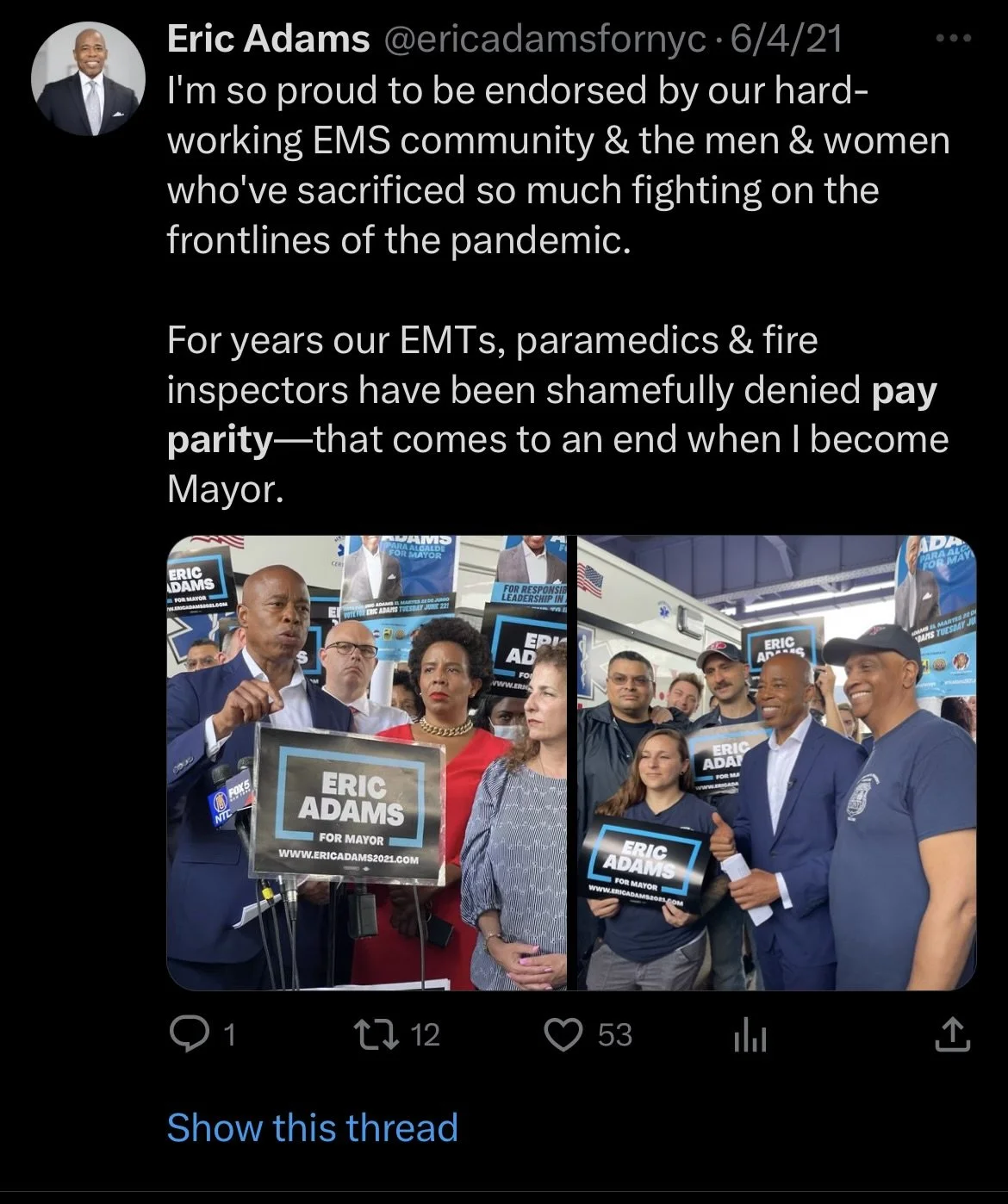What Should the Hourly Rate Be For Cheating Death in NYC?
New York City EMTs and paramedics aren’t “ambulance drivers”—they’re lifesavers. We must treat them that way and pay them what they’re really worth.
By Joe Maniscalco
On the latest episode of WBAI’S Labor and Healthcare Confidential, Uniformed EMTs, Paramedics & Fire Inspectors FDNY Local 2507 President Oren Barzilay asserted—quite modestly—that the dangers his members face on the job are “just as high as the other [uniformed] professions” in New York City. Oren was being diplomatic, even understating the case.
That’s because why many in city government have little trouble imaging the inherent dangers firefighters and cops face rushing into burning buildings or apprehending armed assailants, they are much slower to recognize the absolute horrors New York City EMTs and paramedics encounter on the job, day in and day out, as a simple matter of course.
There’s always been a fiscal advantage in portraying these literal lifesavers as nothing more than “ambulance drivers” because doing otherwise would mean you’d have to pay them what they’re actually worth. And right now, the City of New York—led by a mayor who promised EMTs and paramedics pay parity with firefighters once he got into office—is definitely not paying Barzilay’s members what they are worth.
As Oren said on WBAI’s Labor and Healthcare Confidential, his members start out at just $39,000 a year and max out at $59,000 no matter how many years they wrack up cheating death on our behalf.
Just how much should somebody charged with pulling the victims of traffic accidents, building collapses, heart attacks, and strokes back from the brink of death earn? What should be the hourly rate for saving the toddler down the street from bleeding out on the sidewalk?
Contrast that with New York City Council members who pull down nearly $150,000 a year for doing whatever it is they do all day long. The City Council Speaker rakes in $164,500 year. And the mayor? Well, the citizens of New York City pay him more than a quarter of a million dollars a year.
I don’t really ever expect to encounter the “impending face of doom” during the course of my job, and many of you probably don’t either. But the EMTs and paramedics Work-Bites has spoken to in the past know it well. They’ve openly discussed how, once seen, it never goes away.
Veteran EMS worker Jennifer Aguiluz recalled first encountering the “impending face of doom” a number of years ago responding to a horrible traffic accident in the southeastern portion of Queens in which one woman was gravely injured.
“I knew she was in great danger as soon as we turned her over,” Aguiluz told Work-Bites. “We got her into the back of the ambulance, and that’s when she got even worse. She’s now complaining of abdominal pain—her last words were: ‘Can you call my son?’”
Here’s the Tweet candidate Eric Adams put out in 2021.
And that’s the job. Sometimes, New York City EMTs and paramedics are able to work their magic, get their patients stabilized, give them the right drugs, and save their lives. Other times, though, they do everything humanly possible and their patients still die in their arms uttering their last breath. Well, file that away somewhere deep because there are more calls to answer.
That’s real harm. That’s a real danger to a worker’s health and psyche—one that is definitely “just as high as the other [uniformed] professions”—to say the least.
In June, the New York City Council, in some kind of acknowledgement of the dangers EMTs and paramedics face daily, performed a little bit of magic themselves and came up with $1 million for a pilot program in the Fiscal Year 2026 Budget aimed at beefing up supportive mental health services.
"The wellbeing of our city's EMS workers is critical to New Yorkers' collective health and safety,” a spokesperson for City Council Speaker Adrienne Adams told Work-Bites this week. “The trauma from the constant crisis situations these first responders face can take a toll on them if unaddressed. That's why the Council is funding the creation of a $1 million dollar pilot program to provide mental health peer support and programming to them. As the mother of an EMS worker, Speaker Adams understands these challenges firsthand and continues to be a strong supporter of getting these emergency workers what they deserve.”
I dunno, but I’d be ashamed to rake in a six-figure salary as a New York City Council member or some other government official while city EMTs and paramedics fail to earn anywhere near that amount even after five years on the job. I would like to think I’d advocate slashing all of our six-figure salaries in half—the mayor’s included—and giving half of that to the City of New York’s 4,500 overwhelmed and underpaid EMTs and paramedics. That would at least cover a light bill and some groceries.
“I love my city,” Paramedic Jazmine Moore told Work-Bites in 2023. “But it's come to a point where we can’t even survive.”
It’s all about priorities. And the City of New York’s priorities are completely screwed up across all areas of public life. Or maybe they’re not. If things are supposed to benefit the rich and making sure nothing impedes their insatiable hunger for greater profits from every source imaginable, than everything is functioning just as designed. City Council people, Speakers, and Mayors, some more preposterous than others, can be shuffled in and out on well-greased skids and increasing voter apathy, and the party just continues.
How long will it be before we’re all seriously told that the only solution to increasing emergency response times in New York City is privatization? That’s right, privatize municipal healthcare, public housing, and privatize the air we breathe.
Privatize everything until our dying breath.


